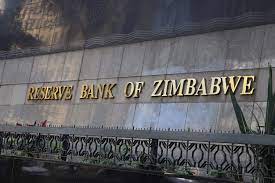The Reserve Bank of Zimbabwe (RBZ) says the country will move away from the current multi-currency system to a full local currency by 2030, assuring businesses and the public that the transition will be smooth and will not disrupt the economy.
For now, Zimbabwe operates under a multi-currency regime, led by the US dollar and the gold-backed Zimbabwe Gold (ZiG). This arrangement, which was adopted after years of high inflation and currency instability, is legally set to remain until 2030. The RBZ believes that by then, Zimbabwe will have built strong economic foundations to sustain a stable and reliable local currency.
Zimbabwe first adopted a multi-currency system in 2009 after hyperinflation rendered the Zimbabwe dollar worthless. The US dollar brought stability but also came with challenges — it is too strong for a developing economy, making Zimbabwean exports less competitive in the global market and limiting the government’s ability to fully manage the economy.
Efforts to return to a single domestic currency in the past have failed due to high inflation. But the RBZ says the situation is now different. According to data from the Zimbabwe National Statistics Agency (ZimStat), monthly ZiG inflation has stayed below 1 percent for the last three months, with an average of 0.6 percent since February. The bank forecasts that monthly inflation will remain below 3 percent through 2025. Annual inflation, though still high due to past currency devaluations, is expected to ease to around 30 percent by the end of this year.
The RBZ attributes this progress to tighter monetary and fiscal policies, the introduction of the gold-backed ZiG in April last year, and a significant reduction in the gap between the official and parallel market exchange rates — from 100 percent last year to less than 30 percent now. The stability has increased public confidence, with the share of ZiG in electronic transactions rising from 26 percent in April 2024 to over 40 percent in June 2025. Cash usage in ZiG has also grown.
RBZ Governor Dr. John Mushayavanhu said the plan to fully return to a domestic currency will be part of the National Development Strategy 2 (NDS2), which will replace the current NDS1. The NDS2 is expected to lay out the “de-dollarisation roadmap” that will ensure low inflation, a strong local currency, and a productive economy by 2030.
During the 2025 Mid-Term Monetary Policy Review and at a stakeholders’ breakfast meeting in Harare, Dr. Mushayavanhu assured that foreign currency accounts and US dollar-based contracts will be respected until 2030. He added that the RBZ will focus on keeping the current stability intact while preparing for the transition.
Stakeholders at the meeting — including business leaders and economists — welcomed the idea of a planned shift to a single currency but called for more clarity on the timeline and implementation process. Many also stressed the need for the RBZ to remain consistent in its monetary policies and avoid sudden policy changes that could destabilise the economy.
RBZ Deputy Governor Dr. Innocent Matshe explained that Zimbabwe’s reliance on the US dollar creates liquidity challenges since the country cannot control its supply. He insisted that moving to a local currency is the best way to give the country full control over monetary policy and drive long-term growth.
General Manager of Buy Zimbabwe, Mr. Alois Burutsa, linked the de-dollarisation effort to the government’s push for local procurement. He said buying more goods from domestic suppliers would reduce imports, support local industries, and make it easier for the country to use its own currency.
The RBZ and Treasury expect Zimbabwe’s economy to grow by 6 percent in 2025, up from the 2 percent growth recorded in 2024, when the El Niño drought affected agriculture. Authorities say the improved stability of the ZiG and ongoing reforms have created a better environment for business planning, investment, and sustainable growth.
However, questions remain about what will happen after 2030, especially to foreign currency deposits. Stakeholders have requested legal guarantees to protect their savings when the multi-currency system ends. The RBZ has acknowledged these concerns and says it will address them in future policy updates.
For now, the central bank’s message is clear: Zimbabwe will not rush the process, but the goal is to have one strong, stable local currency by 2030, supported by a healthy economy and low inflation.
